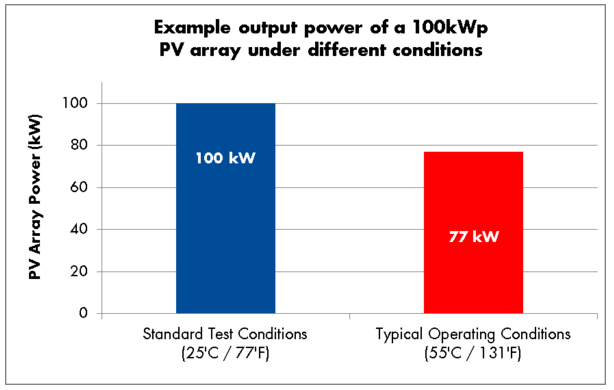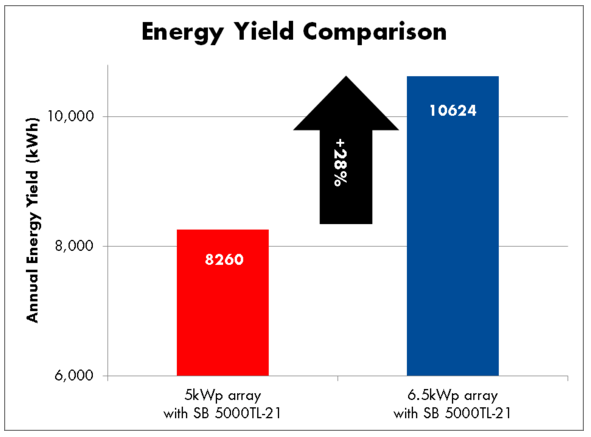Over-sizing of solar systems means that you install more solar panels than the rated output of the inverter. An example would be installing 6.5kW, or around 26 panels on your roof and installing a 5kW inverter.
Technically this can be done without damaging the inverter or jeopardising your inverter warranty.
In fact by over-sizing the solar inverter you will have a solar system that operates more effectively for the following reasons:
Make better use of the inverter’s AC output
Solar panels are rated to produce an output when tested under a set of conditions known as standard test conditions. (STC). In the real world however your solar panels will deliver electricity based on a number of factors: temperature, irradiance (amount of sunlight hitting them) and air mass (the quantity of air light travels through).
By over-sizing your solar panels you can increase the amount of time the inverter produces electricity at its maximum.

Lower the cost of energy delivered
A solar system that performs more efficiently will obviously provide more energy over its life.
If we consider the amount of money spent on a solar system compared to how much energy the system delivers we can calculate the $/kWh produced.
The graph below shows the amount of energy delivered for a 5kW system using 20 x 250Watt panels as opposed to an over-sized system with 26 solar panels.

Reduce inverter costs
A smaller inverter will reduce the system costs overall. If you oversize you can benefit from lower prices without expensive inverter costs.
Make the most of east-west PV arrays
On roofs where north facing solar panels are limited due to space or shading – solar panels can be mounted on an east west orientation. If the system is over-sized you will get the same return as you would if the panels were facing north.
This can also be beneficial when we consider time in how we use electricity.
Eastern orientations will provide more energy in the mornings while western facing panels will produce more in the afternoon.
Maximise the government incentive
The government STC incentive provided for upfront costs of solar power is based on the amount of solar panels you install on your roof.
With an over-sized solar system, costs for installation and mounting equipment may be a little more, however the cost for the extra solar panels will be offset by the increased incentive value, further increasing the $/kWh energy yield discussed previously.
All in all a well-designed solar system that over-sizes the panels correctly can provide real benefits to homeowners that wish to maximise the payback period for solar.
Installation costs are reduced from an inverter cost perspective and government incentive can be maximised.
Plus, for those considering battery storage in the future, over-sizing the array now makes it more cost effective than adding additional solar panels when battery costs fall, as a single installation will always be less expensive than doing it twice.

